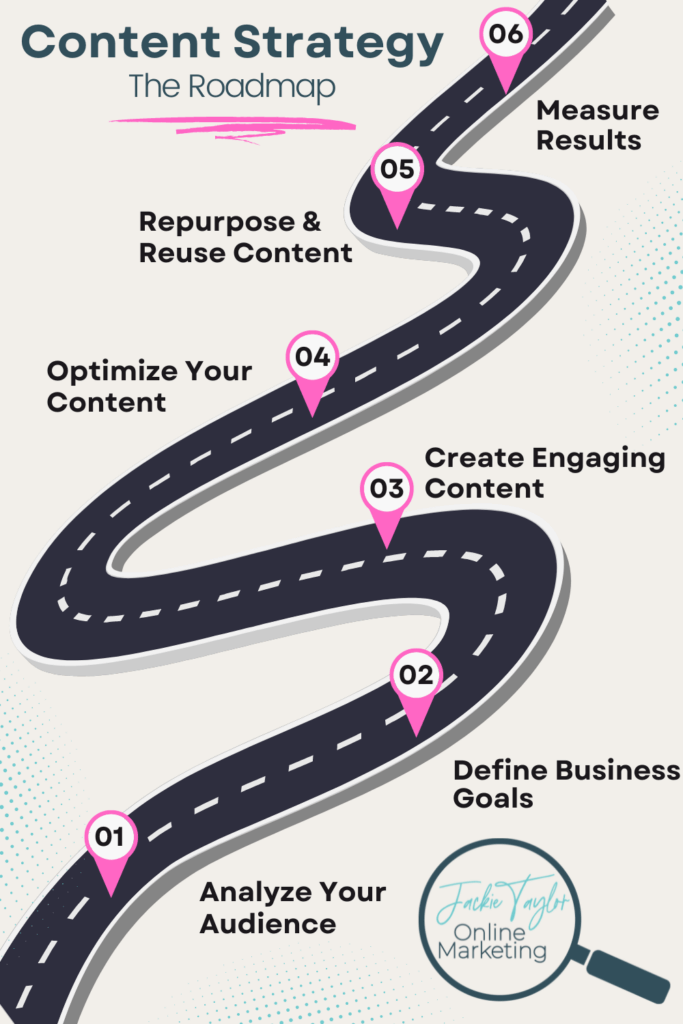If you haven’t heard Robert Cialdini’s name come up when talking about persuasion marketing, then you haven’t learned enough about persuasion tactics. So let’s talk about Cialdini’s 6 principles of influence. You’ll learn what each of the 6 principles are and why they’re important to your marketing. And lastly, you’ll learn how you can use each in your marketing strategy.
AFFILIATE DISCLAIMER: I SOMETIMES LINK TO PRODUCTS AND SERVICES TO HELP COVER THE COSTS OF RUNNING THIS BLOG. THERE’S NO EXTRA COST TO YOU – AND I ONLY RECOMMEND PRODUCTS THAT I’VE BOTH USED PERSONALLY AND THINK ARE QUALITY PRODUCTS THAT HELP WITH EFFICIENCY. PLEASE READ MY AFFILIATE DISCLOSURE FOR MORE INFORMATION. THANKS FOR YOUR SUPPORT!
Table of Contents
- Who is Robert Cialdini?
- What are the 6 Principles of Influence?
- Reciprocity
- Commitment and consistency
- Social Proof
- Authority
- Liking
- Scarcity
- Recap Cialdini’s 6 Principles of Influence

Who is Robert Cialdini?
Robert Cialdini is the author of Influence, New and Expanded: The Psychology of Persuasion. In his book, he talks about the 6 principles of influence. Sometimes they’re referred to as principles of persuasion.
These guiding principles will help you better understand the psychology of marketing your business. And you’ll learn how to effectively create content, ads, and other promotional materials that make that necessary connection with your buyers.
It’s the difference between almost sales and money in the bank.
What are the 6 Principles of Influence?
In his book, Cialdini talks about the 6 principles of influence. Again, sometimes referred to as persuasion tactics. Those principles are:
- Reciprocity
- Commitment and Consistency
- Social Proof
- Authority
- Liking
- Scarcity
Reciprocity
What is reciprocity for online businesses?
Reciprocity is about improving your reputation or your brand image. It’s all about providing value to your customers. And it’s about giving as much as you can to your followers and customers.
If you can easily get word of mouth referrals or glowing testimonials, you’re handling reciprocity correctly. But if you’re not, how can you fix your brand’s reputation?
Why is reciprocity important?
Have you heard anyone talk about the know, like, trust factor? I’m sure you have. People in the online space tend to talk about the same things. They hear someone say it, and they try to say the same thing in a different way. It’s unfortunate and make this space a little daunting at times.
But the idea behind the know, like, and trust factor is that you have to let people get to know you, so they can decide if they like and trust you.
It’s like that Facebook marketplace purchase you wanted to make. A like-new four wheeler for $2,500 seems like a steal. Like it’s almost too good to be true. Can you really trust this person? Should you venmo money to them to hold it?
No. You really shouldn’t. Becuase you don’t trust them. You know that’s way too low for a newer four wheeler, and sending them money before you see it? It doesn’t seem legit.
Reciprocity is important because people don’t buy from those they don’t trust.
How to use reciprocity in your online business
The best way to use reciprocity in your business is to create quality. Quality digital products, quality services, and quality free content.
Show your expertise, be helpful, and don’t just look for the sale. Look to help others first. In doing so, the sales will come.
Think about all the people that just started creating content for fun and it somehow turned into a money maker. It became their job. That’s because they started for fun and to be helpful. Then people requested more help and even offered to pay them.
You don’t have to start completely for free, but take a page out of those creators’ book and look to help before looking for a sale.
You’ll get more sales that way. And you might even get more clarity in your business and your marketing.
It opens up your mind to other possibilities and doesn’t keep you so distracted and tied down as you desperately try to make money online.
And the best advice I can give you for reciprocity, create a content strategy. Even if you aren’t asking for the sale, you can still create content that indirectly leads to sales later.
If you launch a new digital product, course, online service, you don’t just launch day one. You create content that leads up to it.
You prime your audience for the sale. Just like priming a wall so the real paint adheres better, you can prime your audience so the real products or the paid products sell better.
Related Article: Types of Content Marketing: Why It’s Important to Your Business
Commitment and consistency
What is the commitment and consistency principle of influence?
Commitment and consistency is how well you stay committed to your audience. Do you start posting regularly, get burned out, and then simply stop out of nowhere? Are you staying consistent in your posting?
Staying consistent doesn’t just mean posting at the same time each week. Or even posting a certain number of times per day. And consistency is different for each person.
What it actually means? Consistency is posting the the same amount of times each week. Or as close as you can. It doesn’t have to be exact. And posting for a long period of time.
If you can create one blog post per week, great! But do that over a 6 month period. If you can create one Instagram reel per week, great. But do it longer than one month.
Creating 5 reels per day, but only for 2 weeks will not help you.
However, that one reel per week for 6 months or a year? That’ll show consistency and commitment to your audience and the Instagram algorithm. And that’s going to help your business much more than adding more and more content.
Also, try to be consistent with the topics that you talk about. It isn’t just the frequency with which you post. It’s also consistency with your topics. I recommend a content strategy and a content matrix to help keep you consistent and on topic.
Why is commitment and consistency important to your content marketing?
Commitment and consistency are important because they build credibility. When you continue to show up for your audience, they know they can count on you.
If you’re creating content online (any type of content) and you constantly take long periods of time off, how can your audience trust that’ll you’ show up for them? It doesn’t come across as professional to go radio silent for months at a time.
And yes, you can still take time off. But let your audience know when you won’t be around.
You’re on maternity leave? Congratulations! But let your audience know you won’t be around for 2 months, 3 months, whatever length of time you’ve decide to take off.
It’s that commitment to them that helps with reciprocity.
Letting your audience know that you won’t be around and then showing back up when you say you will is all that you need to do.
In fact, doing what you say you will is really all you need with anything in business. That alone will set you apart from the majority of people. It seems so simple, yet so many people fail to do this.
How can you stay consistent with your content marketing?
Staying consistent with your content creation comes from having a plan.
A content strategy is your guide.
It’s purpose behind each piece of content. It’s your reason for creating in the first place. Everything you create should have a purpose. It should tie back to your business goals and your paid offers.
And that strategy is how you create your content plan quickly and easily each day, week, or month. You shouldn’t have to wonder what to create. It should all be planned out for you.
Learn my Content Strategy Framework: As Easy as ABC
Bookmark this post for future reference on Pinterest.

Social Proof
What is the social proof principle of influence?
You’ve heard of FOMO (Fear of Missing Out). And that’s exactly what social proof is all about. People tend to follow whatever someone else is doing.
I’ll give you a quick example.
I was dancing at a wedding and the Wobble dance came on. I did what I thought the dance was. And everyone followed.
Well, someone who obviously knew the dance better than me came out and showed everyone the right way to do it. But for over 3/4 of the song, I was the leader and everyone followed what I was doing.
To be fair I was only missing one small step 🙂 But everyone followed me because they didn’t know how to do it either. And because humans are like pack animals. We tend to follow.
Why is social proof important to your marketing strategy?
And that’s part of why social proof works. Another part is testimonials. With online buying being the preferred way to shop everyone is looking to others for reviews before they buy. I’m sure you’ve done the same.
Amazon reviews are something I look at before making a purchase, each and every time. I want to know if anyone had issues.
In fact, I tend to read the negative reviews first. I just want to see how bad the problems were. Is it something I think won’t be a big deal? Or is it a deal breaker? I want to know right away, so I’m not wasting my time even looking at the product. Social proof is huge.
Make sure you’re making quality products or providing quality service. And make sure you don’t forget about the customer service side of your online business. It’s extremely important.
How to get social proof for your business
Well, this one is fairly simple, you have to ask for it. But the hard part is how to ask. Is there a right way to ask for testimonials and reviews? Is there an easy way to do it, and can you do it affordably?
The answer to both of those questions. Yes.
Yes, there is a right way to ask for reviews and feedback from your past customers. And yes, you can get reviews affordably. You just have to know what products to use to automate the process.
Some products that I like for asking for online reviews and testimonials include:
- VideoAsk
- testimonial.to
- Typeform
- SurveySolutions
And you don’t need all of these options. One will do. But find what works for you, your audience, and your budget.
Related Article: The Power of Storytelling in Content Marketing
Authority
What is the authority principle in marketing?
Authority is simply becoming known as an expert in your niche or industry. And bonus points if you can become known as THE expert in your niche. It means everyone looks to you for ideas and creativity.
They know you’re so well-versed and experienced in your specific area that they look to you to solve their problems.
It’s like Warren Buffett for investors. But did that happen overnight? No, he had to work at it for a long time.
Why is the authority principle in marketing so important?
Authority sometimes comes from followers. If your follower count rises, people tend to assume that means you know what you’re talking about. But not always. Really, it boils down to your expert knowledge and how your knowledge is perceived by others.
On LinkedIn, I see posts from smaller accounts that are really insightful. They’re experts in their area, but don’t have a huge following. Days later, I see that same post (just re-written in different words), but by a well-known, micro-influencer on LinkedIn.
And guess what? That micro-influencer gets a lot more likes, comments, and shares.
They may say the same thing, or offer the same products and services, but people will still seek them out because of the expert-level authority that they’ve built up.
This will NOT happen overnight. So be patient and know that you’re building something bigger and better. Give it time and keep working.
How to Build Authority Online
So how can you build authority, even if you have a small audience? Thankfully, there are a few ways to build authority online. One way is to regularly create content.
It doesn’t matter what platform you create for. It could be social media, blogging, podcasting, YouTube videos, Pinterest, or any other form of content online. The trick is to create content that others want and like.
So you need a content strategy to follow. One that helps you know what to create, when to create it, and where to post your content.
And here are a few other ways to build authority.
Build your authority in your niche or industry when you:
- Regularly create content
- Speak at events or summits
- Guest post for blogs or podcasts
- Display your credentials online
- Highlight awards on your website or social media platforms
Find what works for your business, where your audience is hanging out, and what you’re personally comfortable with.
If you find businesses that cater to a similar audience, it’s a great way to swap services with each other. It helps you get in front of their audience and gives them the same opportunity.
Liking
What is the Liking principle?
Liking is about being relatable and likable. And no, you won’t be everyone’s cup of tea. You won’t have everyone lining up to follow you. But if you can be authentic in your content creation, and show your personality through your content you’ll be more likable.
Why Liking is important
Liking is important to your marketing strategy because people buy from those they trust, but also those they like.
In my small area, we have a used car salesman that make these really obnoxious tv commercials. They use ridiculous themes, costumes, and literally scream at you in the commercial. I don’t go there when car shopping because I HATE his commercials.
He isn’t winning me over in the liking department, but that’s okay. Because those ridiculous and over-the-top commercials are helping him make sales. Just not with me. Because I’m not his ideal buyer.
So liking isn’t about getting everyone to like you. It’s about getting the right people to like you. And that boils down to a good content strategy, so you’re creating content efficiently.
How to use Liking principle in your marketing:
- Be relatable and show your true self. Tell stories about your life that you can connect back to your business. Because it’s true, storytelling sells. Read: The Power of Storytelling in Content Marketing.
- Do better market research, so you can know without a doubt what you ideal buyers are actually needing. And what they’re wanting. This ties into reciprocity and providing value.
- Be sociable and build relationships. Sales has always been about networking and building relationships. That has never changed, and will most likely never change. But with the internet and online buying, how we network has changed. In person networking events have become online summits or social media platforms, like LinkedIn.
Bookmark this post for future reference on Pinterest.

Scarcity
What is the scarcity principle of influence?
Out of the 6 principles of influence, scarcity is one of the most widely used. It’s the idea that there’s a limited time and limited products for you to buy something. The psychology behind this is that when things are scarce or there’s a limited supply, it’s somehow more valuable.
Why is scarcity important in marketing?
Scarcity can create a frenzy for your offers. If you offer a discounted price to a small quantity of buyers, they’ll be more likely to purchase because they’re afraid of missing out on that price.
If you offer a course but it’s only available twice a year, they’ll be more likely to buy last minute for fear of waiting another 6 months to purchase.
The scarcity principle of influence is all about tapping into people’s fear of missing out. And countdown timers and limited-time discounts do just that. Tap into your ideal buyers’ FOMO.
How to effectively use scarcity in your marketing?
The only rule for using the scarcity principle is to use it morally.
Don’t use scarcity tactics like countdown timers if it’s an offer that you always provide. Instead, use those countdown times for courses that you live-launch and once that cart closes it’s closed until the next round.
Say limited-time pricing for offers that you’re testing in the market and plan to increase your prices after testing. Or discounts to the first 50 people who purchase.
Just don’t use the scarcity when you don’t have a limited supply, limited time, or limited offer. It’s not only dishonest, but your audience will see right through it, and they won’t trust you.
And that won’t help you in the Liking department that we just talked about.
Related Article: Why a Content Calendar is Not Enough: The Importance of a Solid Content Strategy
Recap Cialdini’s 6 Principles of Influence
We’ve covered Robert Cialdini’s 6 principles of persuasion: reciprocity, commitment/consistency, social proof, authority, liking, and scarcity. You know what each principle means, why it’s important, and how you accomplish each principle for your own business.
Tackle all 6 principles of influence and you’ll be a persuasion powerhouse ready to sell your online offers like Richard on Tommy Boy.
Sell a ketchup popsicle to a lady in white gloves? You bet you will! Sorry if you don’t get the movie reference, but it’s one of my favorites. Simply put, using these principles will make it easier for you to market your business and your products or services.
Robert Cialdini is also the author of Pre-Suasion: A Revolutionary Way to Influence and Persuade. You can learn more about this book and my opinion of it in this article: Mom Entrepreneurs: 5 books to level up your business.
What are the 6 principles of influence?
1. Reciprocity
2. Commitment or Consistency
3. Social Proof
4. Authority
5. Liking
6. Scarcity
What is Robert Cialdini known for?
Robert Cialdini is the author of Influence: The Pyschology of Persuasion. He’s also the author of 6 other books on persuasion. He uses his 35 years of experience with persuasion and evidence-based research to teach through his findings.

+ show Comments
- Hide Comments
add a comment